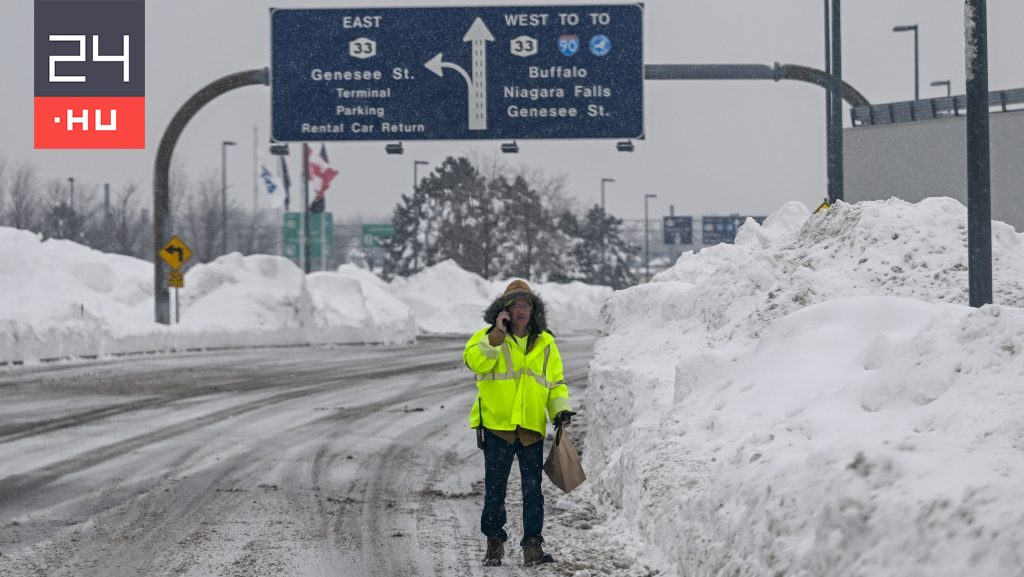In Buffalo, roads reopened to motorists Thursday. While snow removal and a search for victims continue, authorities reported 39 confirmed deaths in the aftermath of the Christmas blizzard, MTI reports.
On December 23, a very cold storm affecting the entire United States reached the western part of New York state, bringing more than a meter of snow to the Buffalo area on the shores of Lake Erie. A traffic ban was lifted in New York state’s second-most populous city on Thursday, but the mayor asked local residents not to get into their cars in order to allow emergency units to move freely.
In the city’s residential areas, hundreds of high-performance machines clear snow obstacles raised by the wind.
A 27-year-old man died of carbon monoxide poisoning after snow blocked a vent in his home. A 22-year-old victim was found in his car a few minutes from his home, he was on his way home from work, but got stuck on the road because of the snowstorm, and there was a victim who wanted to leave his apartment. For a short time, but I didn’t go back there.
25 people died in the bitter cold in other parts of the United States, most of them in traffic accidents on slippery roads.
The Weather Service issued a flood warning for the city of Buffalo after temperatures climbed above freezing, with rain expected Saturday. Cathy Hochul The governor of New York State announced that 800,000 sandbags and 300 pumps were ready to remove water collected in cellars.
The situation in US aviation could return to normal by Friday, and about 2,500 more flights were canceled Thursday, almost entirely operated by Southwest Airlines. The company announced that it will be able to maintain scheduled traffic starting Friday.
A total of 58 percent of the company’s flights were unable to operate during this period, while other airlines were able to meet their schedule for days.
Insurance companies have begun to calculate the damage caused by the winter storm, according to which, in 42 states of the United States, about $ 5.4 billion was lost to insured property. The most damage is expected in New York, Texas, Georgia, Tennessee and North Carolina, after the hail caused mostly infrastructure damage, in the form of frozen and cracked water lines.












































